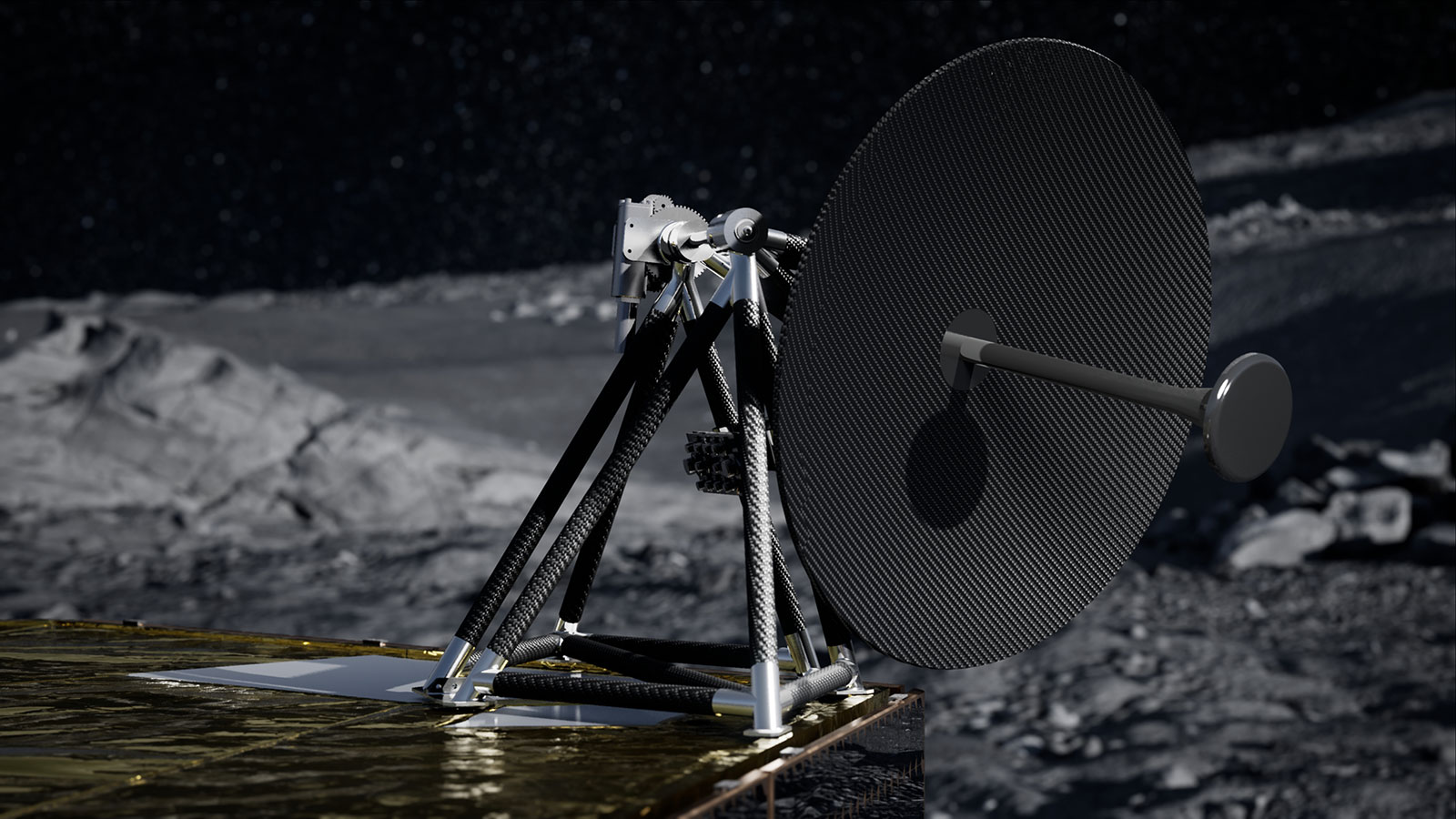Xelene Lunar Lander
Deliver your payload to the lunar surface or lunar orbit with flexible mounting options.
Your Ride to the Moon
Xelene (configuration XL-1) is Masten’s first lunar lander that will enable robotic delivery and operations for Masten’s early missions to the Moon. The lander draws heritage from Masten’s five terrestrial landers and 18 years of experience flying reusable rockets with more than 600 successful rocket-powered landings to date. Xelene also benefits from years of collaboration with NASA on the lander design through NASA’s Lunar CATALYST program.

Payloads
Xelene can accommodate a wide range of payloads, including but not limited to satellites, rovers, scientific instruments, research and development technologies, artwork, branded materials, or personal keepsake items. Payloads can be mounted above or below Xelene’s decks or to the inside or outside of the side panels for a lunar surface or lunar orbit delivery.
Propulsion
Producing 4,000 N of total thrust, Xelene has 6 main engines and 12 Reaction Control System (RCS) thrusters to help trim orbital maneuvers and maintain lander orientation throughout the mission. Xelene’s hypergolic bipropellant system uses a fuel and oxidizer combination that reduces the freezing point and enables operations in extreme temperatures.


Propulsion
Producing 4,000 N of total thrust, Xelene has 6 main engines and 12 Reaction Control System (RCS) thrusters to help trim orbital maneuvers and maintain lander orientation throughout the mission. Xelene’s hypergolic bipropellant system uses a fuel and oxidizer combination that reduces the freezing point and enables operations in extreme temperatures.

Guidance, Navigation, and Control
Xelene’s GNC system helps orient and fly the lander throughout the mission. Following separation from the launch vehicle, the GNC system will autonomously guide the lander and activate engine throttling for a precision landing. Sensor inputs are customized per mission and can include terrain relative navigation, hazard avoidance, and advanced LiDAR sensors to increase landing accuracy.
Communications
Xelene’s communications system moves data via radio frequency from the spacecraft to a network of terrestrial ground stations. Following separation from the launch vehicle, Xelene’s antennas will ensure continuous communication throughout the mission. The high-gain and omnidirectional X-band antennas are built to avoid interference from lander components and provide increased data rates.


Communications
Xelene’s communications system moves data via radio frequency from the spacecraft to a network of terrestrial ground stations. Following separation from the launch vehicle, Xelene’s antennas will ensure continuous communication throughout the mission. The high-gain and omnidirectional X-band antennas are built to avoid interference from lander components and provide increased data rates.

Power
Xelene’s power system primarily relies on solar energy with support from a lithium-ion battery system. The lander has solar panels on multiple sides of the hexagonally-shaped vehicle to provide consistent power generation based on the mission profile.
Thermal Control
Xelene uses both passive (conductive & radiative) and active (heaters) thermal control to ensure all lander components and payloads can survive freezing temperatures in space and on the Moon. Masten’s NITE System can also be added, enabling landers, rovers, and payloads to survive the lunar night.


Thermal Control
Xelene uses both passive (conductive & radiative) and active (heaters) thermal control to ensure all lander components and payloads can survive freezing temperatures in space and on the Moon. Masten’s NITE System can also be added, enabling landers, rovers, and payloads to survive the lunar night.
Fly with Xelene
Working on a lunar payload? Tell us more about your objectives to book a spot on our next mission!